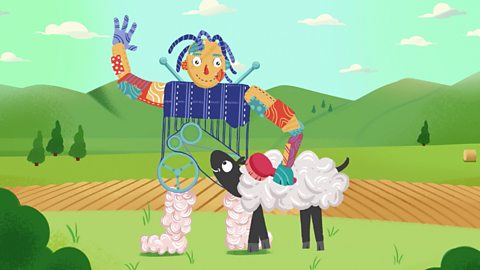Plastic and sustainability
A plastic is a type of non-natural material that can be easily shaped.
In this article you can learn:
- What plastics are made from
- Why plastics are used and what they are used for
- Why plastics are bad for the environment
- How we can help reduce use of plastic
This resource is suitable for sustainability topics for primary school learners.
Video - Plastic and sustainability
In this video, learn plastics and their impact on the environment.
Meet Plastic.
On a diet of oil or gas, he can produce all sorts of stuff; from washing machines, to wigs, to waterslides.
There are loads of different types of plastic.
Plastic fibres can even be used to make clothes like swimsuits, or space suits!
Just look at this hospital. Plastic surfaces and chairs that are easy to clean.
Plastic medical equipment that helps people get better.
Even plastic legs that help people walk.
But plastic has so many uses that it's pretty much everywhere.
And that's a big problem.
First off, plastic factories pump out toxic fumes, which is bad for our health and contributes to global heating.
Secondly, plastic litter looks ugly and can harm wildlife.
Marine animals and birds in particular can be hurt or even killed by plastic in the sea.
Plastic also lasts for hundreds of years. So if you throw away a bottle, it'll still be there in the future when your great, great, great, great grandkid is about.
So what can we do about it?
Well, we can recycle some plastics. This is when we take plastic that's used for one thing, like a bottle and then make it into another, like a carpet.
The more we recycle, the less plastic is wasted and the less new plastic we need to make.
There are new materials that reduce our plastic use, too.
Lots of takeaways and supermarkets use compostable bags, containers and cups.
Compostable packaging biodegrades in a compost bin, just like vegetable peelings and apple cores.
But the very best thing to do…
…is use less plastic!
Shopping bags can be made out of cloth or paper, toothbrushes can be made out of bamboo, and clothes can be made out of natural fibres.
Realistically though, we're still going to need Plastic to make some things.
He's just too useful with his flexibility and his strength and his low cost.
So we should try and reduce his most harmful effects like toxic fumes, litter and pollution by only using him for the most important stuff.
What are plastics made from?
Plastics are normally made from a fossil fuel: oil, gas and even coal. The material is heated up so it breaks down into smaller molecules. These are then joined together in a new way, making plastic.
There are many types of plastic and all they have different uses.
Why is plastic used?
There are lots of different types of plastics but most are strong, light and last a long time.
They don’t get damaged by water and some types of plastic can resist heat, chemical damage and electricity.
They also can be made to look nice, including being made into lots of different colours. This is why they are used for things like furniture and decoration.
Here are some examples of different plastics, what they are used for and how easy they are to recycle:

Image caption, Polyethylene Terephthalate (PETE)
Polyethylene Terephthalate (PET/PETE) is a commonly used plastic. You'll find it in bottles, food packaging and even clothing (eg. polyester). It is widely recycled, often made into sportswear. (Davyd Hruts / Alamy Stock Vector ; Zoltán Papp / Alamy Stock Photo)
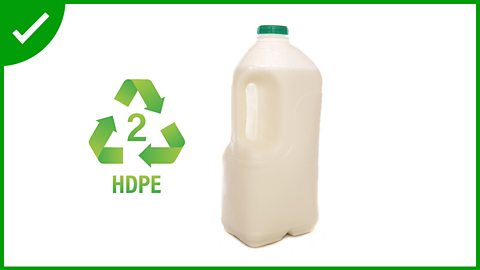
Image caption, High-Density Polyethylene (HDPE)
High-Density Polyethylene (HDPE) is used for a lot of things, including toys, shampoo bottles, pens and milk bottles. It is widely recycled. (Davyd Hruts / Alamy Stock Vector ; chris brignell / Alamy Stock Photo)
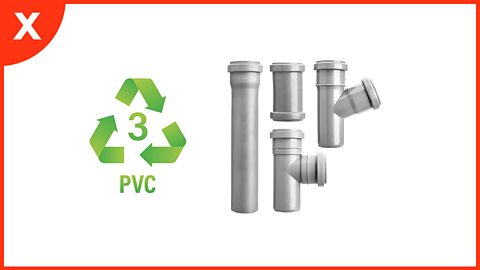
Image caption, Polyvinyl Chloride (PVC - U)
Polyvinyl Chloride (PVC/PVC-U) is used to make rigid things like furniture, windows and piping as well as softer things like cling film and beach balls. Most PVC can't be recycled! (Davyd Hruts / Alamy Stock Vector ; Roman Milert / Alamy Stock Photo)
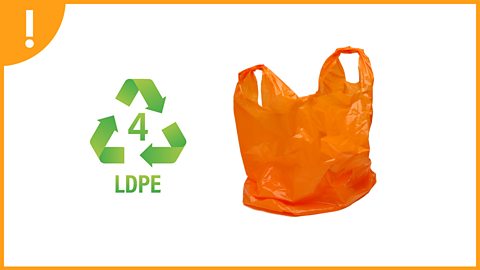
Image caption, Low-Density Polyethylene (LDPE)
Low-Density Polyethylene (LDPE) is used to make containers and packaging such as cling film, bubble wrap and plastic bags. Only some LDPR can be recycled. (Davyd Hruts / Alamy Stock Vector ; Andrew Paterson / Alamy Stock Photo)
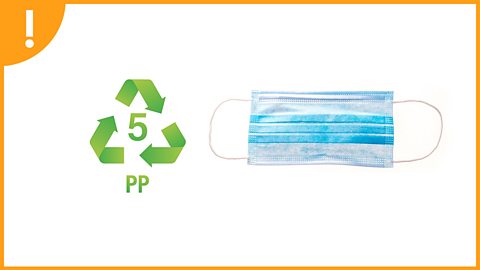
Image caption, Polypropylene (PP)
Polypropylene (PP) is used in a wide range of items, including food tubs, medicine bottles, glass jar caps and even disposable face masks. Only some PP can be recycled. (Davyd Hruts / Alamy Stock Vector ; Gang Liu / Alamy Stock Photo)
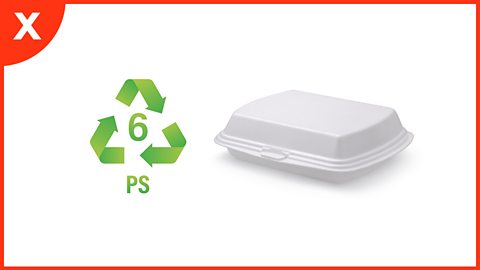
Image caption, Polystyrene or Styrofoam (PS)
Polystyrene or Styrofoam (PS) is used in packaging and insulation. You'll find it in disposable cups and plates, some car parts and take-away containers. PS is not commonly recycled. (Davyd Hruts / Alamy Stock Vector ; Anton Starikov / Alamy Stock Photo)
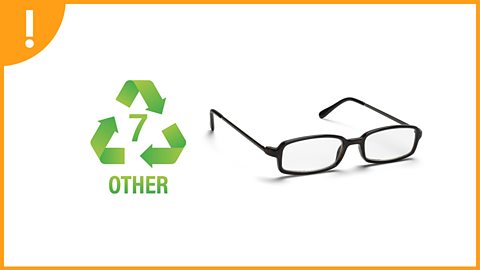
Image caption, OTHER
The OTHER category covers items that don't fit into the previous six plastic types. Examples include sports bottles, CDs/DVDs, some electrical wiring and reading glasses. OTHER products are not commonly recycled. (Davyd Hruts / Alamy Stock Vector ; Elisabeth Burrell / Alamy Stock Photo)
1 of 7
Why are plastics bad for the environment?
Making them uses oil, gas or coal, which are non-renewableNatural resources that cannot be replaced after they are used. This means that they exist in a fixed amount on Earth. Fossil fuels such as coal, oil and gas are all non-renewable resources. fossil fuelsFuels that come from the Earth. Fossil fuels are all old life forms that have decomposed and been compressed over a long period of time under ground or under the sea. Coal, oil and gas are fossil fuels.. That means once we have run out of them, they are gone.
Factories that make plastics produce a lot of toxicPoisonous, harmful. fumes and carbon emissionsThe release of carbon into the Earth’s atmosphere. This contributes to climate change. which contribute to climate changeThe change in the usual conditions of weather (temperature, wind, rainfall etc.) on Earth over a long period of time. The climate has changed throughout the history of Earth, but current climate-change refers to an increase in global temperature..
They do not biodegradeTo break down and disappear over time. . This means they won’t break down naturally and unless we tidy them up, they will be around forever.
Plastic litter is very harmful to wildlife, both on land and in the ocean.
The damage caused by plastic waste is on the increase and people are being warned to take action now before it is too late.
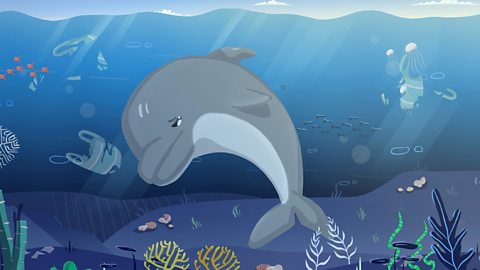
Image caption, Plastic in our oceans can harm or even kill birds, fish and other marine life.
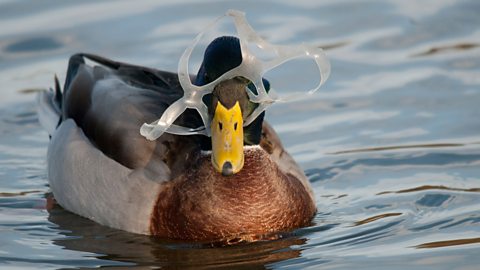
Image caption, Animals can get trapped in plastic and be very badly hurt.
(Steve Bloom Images / Alamy Stock Photo)
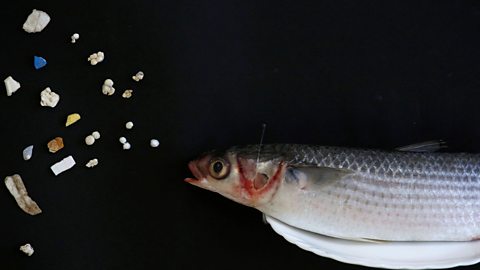
Image caption, Plastic breaks down into tiny pieces in the sea and some animals might accidentally swallow it.
(REUTERS / Alamy Stock Photo)

Image caption, All sorts of animals can become ill because they eat plastic that their bodies can't digest.
(MediaWorldImages / Alamy Stock Photo)
1 of 4
How can we help reduce the impact of plastic?
If we follow the simple rule of reduce, reuse, recycle with plastics, we will do our bit to stop plastic harming the environment.
Reducing our plastic use is the best solution out of the three options.
Reduce plastic
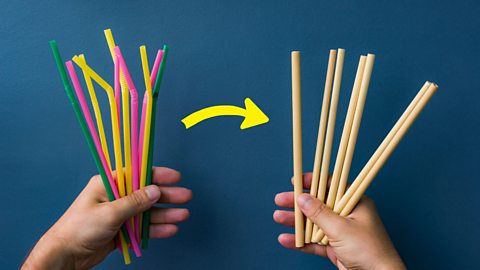
Reduce the amount of plastic we use, especially single-use plastics, such as plastic bottles and plastic cups.
We can reduce our plastic use by using plastic alternatives such as a bamboo toothbrush, a metal water bottle or paper or fabric bags instead of plastic bags.

Reuse plastic
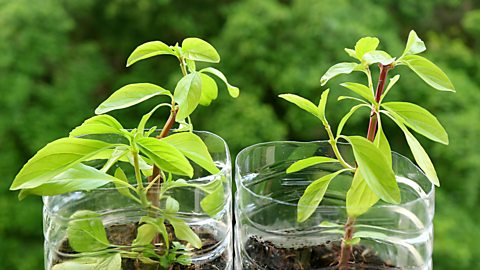
Reuse plastics as much as possible before recycling them.
For example, you could reuse a takeaway container as a lunch box. You can also reuse plastic bags that you have at home.

Recycle plastic
Recycle plastic that we do not need anymore. If we recycle plastic, it means we won’t have to make more new plastic using non-renewable materials so it is better for the environment.
Most plastics can be recycled but often this doesn't happen. Make sure to recycle your old plastic bottles, packaging and other plastic items you use.
Plastic can only be recycled a few times, so it is much better to reduce the plastic you buy and use.
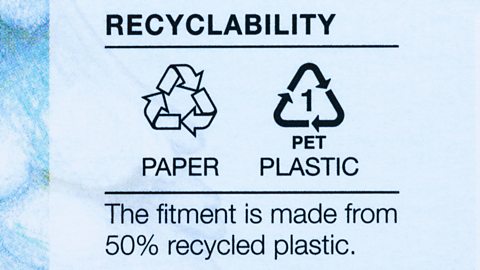
Image caption, Recycling information on packaging lets you know if it has been made from recycled plastic already and whether it can be recycled again. (Carolyn Jenkins / Alamy Stock Photo)
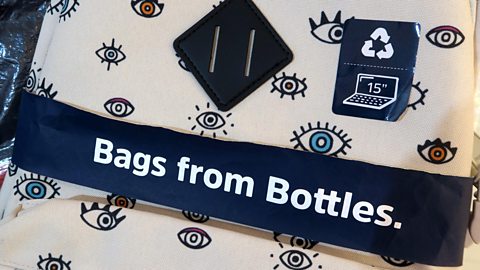
Image caption, A backpack made from recycled plastic. (Mark Azavedo / Alamy Stock Photo)

Image caption, A mat made from recycled plastic. (Andrey Zhuravlev / Alamy Stock Photo)
1 of 3
What are the advantages and disadvantages of plastic?
Advantages of plastic
Plastic is a versatile material that can be moulded in to different shapes.
Plastic is cheap to produce.
Plastic is lightweight and durable. Unlike metal it does not corrode or rust, which means it is good for containing liquids.
Plastic does not conduct heat or electricity, which means it can be used in the manufacturing of electrical products.
Disadvantages of plastic
Most plastic is made from natural materials (coal, oils and gas) that are not renewable and contribute to global warming and climate change
Factories making plastics produce a lot of toxic fumes that can damage our health. They release carbon emissions which contribute to climate change.
Plastic does not biodegrade so plastic waste finds its way in to our environment, polluting land, rivers and oceans.
Plastic waste can be dangerous to wildlife, causing harm to all types of animals, which can get caught in plastic waste or eat small bits of plastic. This can cause the animals to die. Many birds and fish have been found with large amounts of plastic in their stomachs.
The amount of plastic we use is increasing and a lot of this plastic is designed for single-use and is used only once. This means that the amount of plastic thrown away has also increased causing even more damage to the environment.

Key words about plastic
Sorry, something went wrongCheck your connection, refresh the page and try again. - Coal, oil and gas are the three fossil fuels – these are our non-renewable energy sources. They are called fossil fuels because they are made from dead animals and plants. These animals and plants are compressed underground over millions of years and they eventually turn into fossil fuels.
Sorry, something went wrongCheck your connection, refresh the page and try again. - Natural energy resources that cannot be replaced after they are used. There is a fixed amount of them on Earth. Fossil fuels such as coal, oil and gas are all non-renewable resources.
Sorry, something went wrongCheck your connection, refresh the page and try again. - The release of carbon in to the earth’s atmosphere which contributes to climate change.
Sorry, something went wrongCheck your connection, refresh the page and try again. - This is the long-term change in weather patterns (temperature, wind, rainfall etc.) on Earth, including its side-effects, for example increased drought and flooding.
Sorry, something went wrongCheck your connection, refresh the page and try again. - The ability of a material to breakdown and disappear over time. Some materials are dissolved by bacteria or other biological elements. If a material is biodegradable, it means that it can be consumed by microorganisms. It is an important process in ecology and waste management.
Test your knowledge
Quiz
Challenge
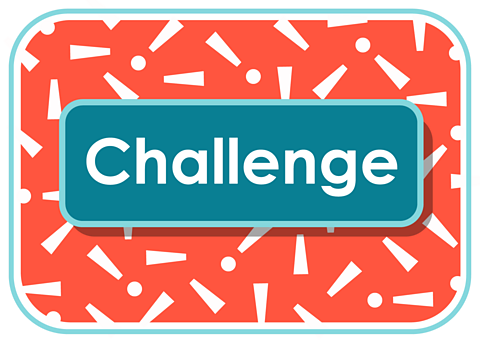
Go on a plastic hunt!
- Find things made of plastic that you use in your room, home or school. Do some research to see if you can find any alternatives online. For example, if your toothbrush is plastic, can you find a non-plastic one?
Remember! If you want to make a change to a non-plastic alternative, you’ll need to agree with your adults what items you could swap. Think about other ways you and your household may be able to reduce the amount of plastic you use.
More on Sustainability
Find out more by working through a topic
- count8 of 28
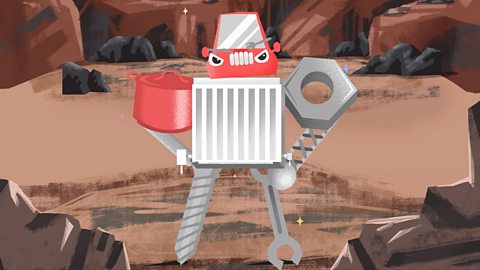
- count9 of 28
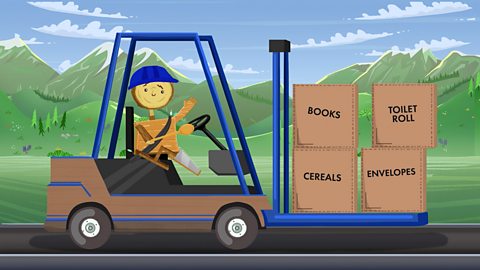
- count10 of 28
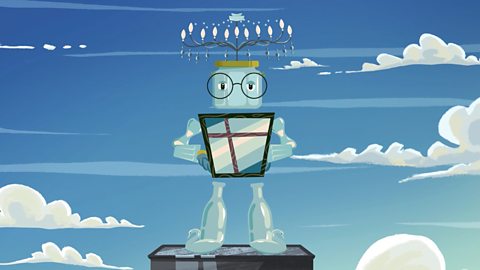
- count11 of 28
